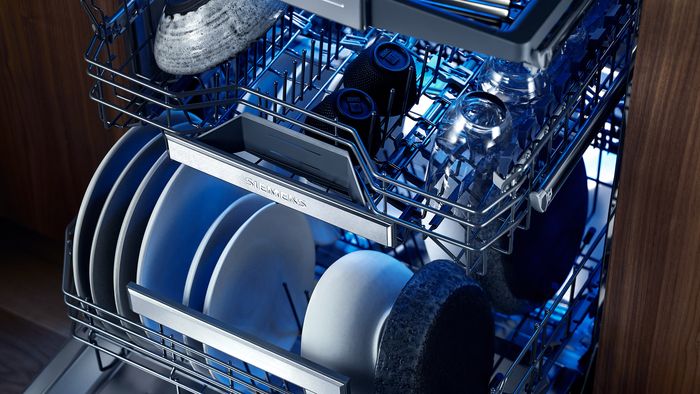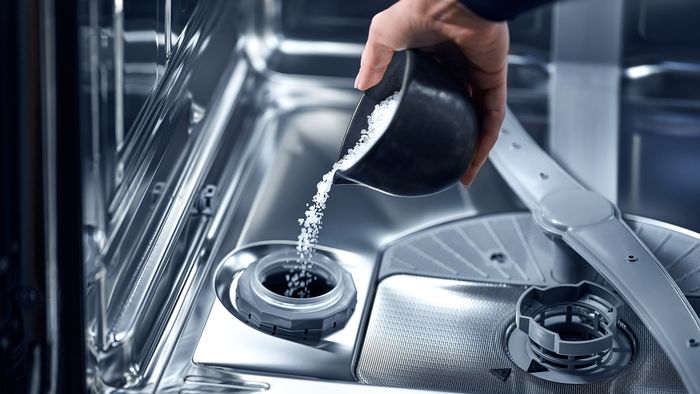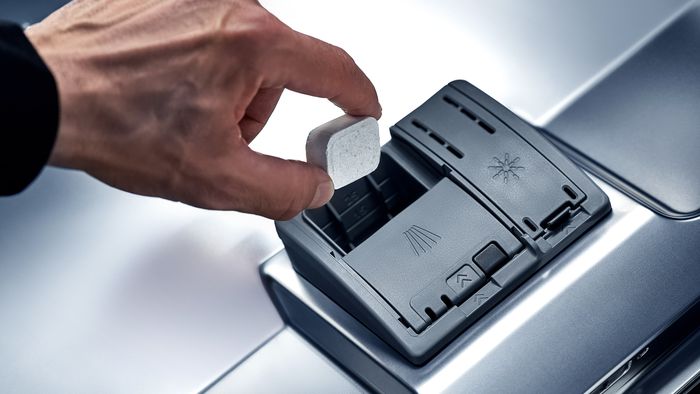Everyone needs an extra helping hand in the kitchen. So how can you use your dishwasher effectively from the very start to gain some time back? We’ve prepared a step-by-step guide so you can achieve perfect cleaning results, always.
To ensure all-time clean and shining results, running a special cleaning and care programme is recommended on a monthly basis. If your appliance has this programme integrated already, you will be automatically reminded to run it on the machine. If you connect your smart dishwasher with the Home Connect app , you will get a reminder on your smartphone too. After thirty washing cycles, the app will remind you to run the special cleaning and care programme, to keep your dishwasher in top condition.
In case you are not sure if there is a care programme on your dishwasher, it’s best to check the online user manual to find all model-specific information. You have your appliance user manuals always handy within your My Siemens area.

Step 1: Measure the water hardness & adjust the water-softening system.
Your dishwasher needs soft water with low lime concentration to avoid glass corrosion and to prevent spots of white limescale on utensils. You can determine the water hardness before using your appliance for the first time. Find the water hardness test strips attached to the user manual or just follow the link below.
Once you’ve measured the water hardness of your tap, adjust your dishwasher’s internal water-softening system. Refer to your user manual, where you’ll also find a water-hardness table to help you get the settings right.

Step 2: Top up the salt & add rinse aid.
The water-softening system requires dishwasher salt to function properly. To add salt, undo the screw cap, first fill the salt dispenser with water and then pour in the salt using a funnel, until it’s full and the water runs out. Screw the cap back on. Then, turn on the dishwasher or run a cleaning programme to wash away any salt overflow. Never fill the salt dispenser with detergent to avoid damaging the water-softening system. Your water hardness will determine how often you need to perform this step. Check the level of salt before topping it up.
Your dishwasher needs rinse aid if you’re expecting stain-free utensils and shining glassware. Open the rinse aid dispenser by pressing and lifting the plate on the cover. Then, carefully pour the rinse aid to the max line shown. Mark the filler opening and close the cover until it clicks shut. Finally, remove any rinse aid that has spilt over with a cloth to avoid excessive foam during the next rinse cycle. Your dishwasher will automatically remind you to top up salt and rinse aid.

Step 3: Add detergent & run a hot cycle.
Use tablets, powder or liquid dishwasher detergent in your appliance. But never use washing-up liquid. Adjust the detergent dose individually, depending on how soiled your dishes or pans are. Use the graduated detergent dispenser to determine the correct amount to add.
If you’re using combination tablets such as 3-in-1, 4-in-1 or 5-in-1, be aware that apart from the detergent they also contain rinse aid, salt replacement substances and additional components, such as glass protection or stainless-steel cleaner. These combination tablets usually only work up to a water hardness of 21°dH. If your water hardness is higher, you’ll need to add salt and rinse aid to the multi-tabs.
Have you successfully completed all of the above steps? Now run a hot wash without loading the dishwasher. After the cycle, your sophisticated new appliance is ready for its first load.








